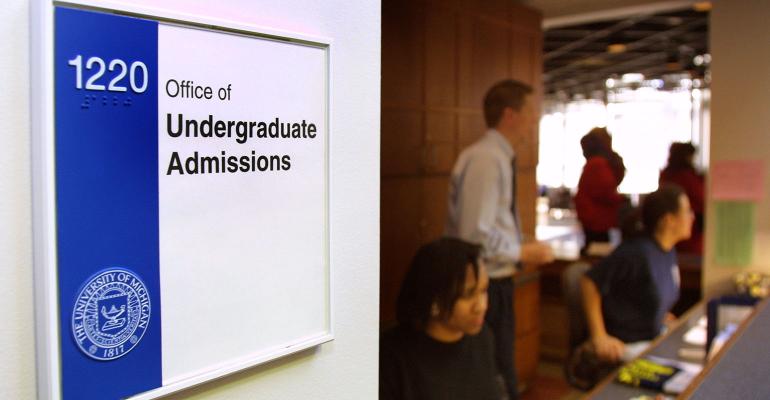High school seniors dream for years about the moment when they will open their college acceptance letters. Some teenagers, however, have to wait even longer before they get their verdicts. And it might be months before they know if they are in or out. You can blame the delays on college waitlists.
According to the 2016 survey by the National Association for College Admission Counseling, 43 percent of private institutions use waitlists. Nearly a third of public universities (31 percent) also rely on them.
Here are five things your clients should understand about waitlists:
1. Waitlists are common among selective schools.
Putting applicants in an admissions holding pattern is standard operating procedure for selective and highly selective schools. Look at colleges and universities that near the top of U.S. News & World Report rankings and you’ll find many schools that employ this admission strategy.
Popular schools that rely on waitlists include:
- Amherst College
- Carnegie Mellon University
- Ohio State University
- Northwestern University
- Princeton University
- University of California at Berkeley
- University of Michigan
- University of North Carolina
- Vanderbilt University
- University of Texas
2. Waitlists have been growing in popularity.
A major reason why college administrators use waitlists is to gain better control over their admission process. Many smart, high-income students now view the admission process at prestigious schools as a high-stakes lottery. Apply to enough highly ranked colleges and universities and, the thinking goes, you’re bound to get into at least one of them.
This attitude makes it more difficult for admission staffers to discern which teenagers really want to come to their institutions. If administrators guess wrong, their admission yield rates can plummet.
3. Schools don’t like to say no to alumni and VIPs.
Colleges are also loath to antagonize alumni and important people by rejecting their children. They can accomplish the same thing by extending a meaningless waitlist invitation. Some families actually consider a waitlist offer a badge of honors. And schools certainly don’t try to dissuade them of this belief even when they have no intention of accepting these applicants.
4. It’s difficult getting off waitlists at popular schools.
According to the NACAC survey, 16 percent of applicants received waitlist offers during the 2015-2016 admission cycle and 41 percent agreed to be placed on waitlists. Less than a third of wait-listed applicants ended up getting acceptance offers.
It’s extremely difficult to get off the waitlist of the most popular schools. Here are two examples from the 2015-2016 admission cycle:
University of Michigan
- Applicants offered a waitlist spot: 11,197
- Applicants who accepted the invitation: 3,970
- Applicants who were accepted off the list: 36
Clearly the University of Michigan abused the waitlist practice. The number offered a spot on the waitlist far exceeded the number of students in the flagship’s freshmen class of 6,689 students.
Massachusetts Institute of Technology
- Applicants offer a waitlist spot: 652
- Applicants who accepted the invitation: 575
- Accepted from the list: 52
While MIT’s waitlist invitations might seem like overkill, the number accepted off the waitlist is 1 percentage point better than its overall acceptance rate (8 percent).
School officials that offer waitlist invitations to excessive numbers of teenagers justify the practice by saying that they never know what kind of students they will need as the freshmen deposits come in. The school might need more sociology majors or violinists for the orchestra or students from distant states.
5. Check out waitlist odds.
Families can research waitlist chances on College Board's website. To retrieve the relevant statistics, type in the name of any school in the College Board’s search box. Click on the "Applying" link in the left-hand column on the college’s profile page and waitlist figures will be at the top.
Steps teens should take
Teenagers should follow a college’s directions very carefully when receiving a waitlist invitation. If they want to accept it, they should do so quickly.
Students should send a detailed letter to the admission office explaining why they want to attend the school.
The student should ask his or her high school counselor to contact the college to provide an additional endorsement.
Schools don’t like to talk about this, but they commonly select students off waitlists that can pay full price. If a family isn’t seeking financial aid, an applicant in his/her letter should emphasize that.
Schools also dislike extending admission offers and then being turned down. If a college truly is the No. 1 choice, a student needs to share that with the school.





